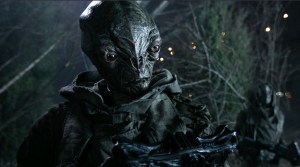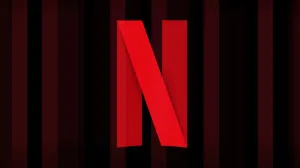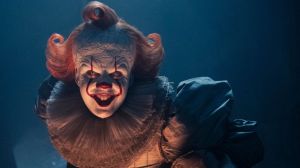From the very first season, Trey Parker and Matt Stone‘s South Park has been pushing itself into the world of larger storytelling. Most often it’s multi-part episodes, be they two-parters or full-on trilogies. Then there’s 1999’s South Park: Bigger, Longer & Uncut not to mention all of the recent Paramount+ exclusive “movies” (which are far more like two-parter episodes than movies). Most would agree that South Park: Post Covid, South Park: The Streaming Wars, South Park: Joining the Panderverse, South Park (Not Suitable For Children), and South Park: The End of Obesity have skewed more lame than classic, but what about the actual multi-part episodes of the show?
Videos by ComicBook.com
We’re ranking all fourteen of the multi-episode arcs below. Whether they’re two-parters or trilogies, they counted for consideration. We did, however, leave off the so-called “Meteor Shower Trilogy.” It would rank high, but it’s not officially deemed a multi-parter.
14) “#REHASH” & “#HappyHolograms”

Season 18’s two-part finale “#REHASH” and “#HappyHolograms” poke fun at Let’s Play (which is when people document themselves playing video games and commenting on it) and the entertainment industry’s desire to seek out clicks and likes over actually creating content. Much less content that actually makes a statement or has value that will last.
As the title “#REHASH” might indicate, this two-parter is far too comfortable digging up jokes that worked once before. For instance, how police deal with Michael Jackson, which was done very well in Season 8’s “The Jefferson” and lands with a thud here. When the best joke is Iggy Azalea’s butt cheeks singing a Christmas carol you’ve found the nadir of multi-part episodes.
13) “Sponsored Content” Trilogy

While the aforementioned two-parter represents the worst of South Park multi-part episodes, “Sponsored Content,” “Truth and Advertising,” and “PC Principal Final Justice” feel equally unnecessary. Season 19 was the first time the show really dove into its newfound serialization, with Season 18 making it more of a loose connective thread.
In Season 19, the serialization does the whole season in. It also makes the final three episodes feel less like a trilogy and more like three slices of a bland 10-section pie. By the time “PC Principal Final Justice” rolls around, one is questioning not just the point of the trilogy, but just how much longer PC Principal is going to stick around (the answer was, sadly, for the long haul).
12) “Unfulfilled” & “Bike Parade”

“Unfulfilled” and “Bike Parade” feel more like an effort to wrap up all the threads of a serialized season than they do a narrative requiring a pair of 22-minute episodes. They basically just come and go and are swiftly forgotten.
Is turning Jeff Bezos into a parody of a Star Trek character funny? Kind of, but the episodes’ true highlight is the fairly accurate statement that the rise of Amazon has made shopping malls basically just a zombie-populated thing of the past.
11) “Time to Get Cereal” & Nobody Got Cereal?”

The first of the duo of two-parters in Season 22, “Time to Get Cereal” and “Nobody Got Cereal?” is easily better than the two episodes that cap the season. Even still, like most South Park episodes from Season 19 on, it’s too political to be compulsively rewatchable.
Even still, it was nice to have Parker and Stone apologize to Al Gore through the episodes, even if they continue to rip on him all the same. It’s also expectedly incisive in its takedown of climate change denialists, like the man who is in a restaurant condescendingly telling his wife there’s no concrete scientific proof of a ManBearPig as ManBearPig thrashes through the establishment behind him until it ultimately sinks its teeth in his forehead.
10) “200” & “201”

“200” and “201” are almost great. Almost, all-timers, in fact. But Comedy Central killed them.
“201” is the big problem. By caving into fear, Comedy Central took what was a poignant examination of bowing to external pressure, even terrorist threats, and proved Parker and Stone’s point. Even Kyle’s final speech in the second half of the two-parter is entirely bleeped. It’s both annoying to hear and unfortunate to ponder. But, hey, at least Tom Cruise gets to call Jimmy Buffett’s music “drunken frat boy monkey garbage.”
9) “Pandemic” & “Pandemic 2: The Startling”

Some folks really don’t like the “Pandemic” duology, and it’s not entirely hard to see why. Randy’s holding of the home video recording camera (making fun of found footage movies like Cloverfield) gets old very quickly.
But there’s just something so bizarre about having the threat be real guinea pigs that is lovable. An entire town running away from something that is just standing there on little paws looking around innocently is very funny. Then there’s the episode’s takedown of U.S. Department of Homeland Security head Michael Chertoff (served under George W. Bush), who becomes a pretty terrific villain as he rambles on about the danger of Peruvian pan flute bands and sends his tongue flying out to extract the brains of his colleague.
8) “Do the Handicapped Go to Hell?” & “Probably”

An underrated pair of episodes, these two Season 4 standouts marked the first time the show had attempted a two-parter since the end of Season 1 (and sophomore episode of Season 2). It’s also far more charmingly narrow in scope than some of the more ambitious entries that beat it in the ranking.
Season 4 was the peak of the boys (mainly Cartman) trying to come up with scams that, quite often, have some basis in reality. In the case of this two-parter, it’s being a televangelist. But the better running thread of these two episodes is actually the B-plot, which is the return of the Satan and Saddam Hussein dynamic that was an integral part of South Park: Bigger, Longer & Uncut. It’s without a doubt one of the most bizarre love triangles in TV history. Not to mention, Satan seeking counsel with JonBenét Ramsey on that triangle is perfectly twisted early South Park, especially considering how earnestly the interaction plays out. Also helping this duology rank high is its message that the concept of Hell is essentially a horrifying scare tactic, and the true way to live as a decent Christian is to live for God as opposed to praising his name all the time and then letting your actions towards other individuals tell a different story about what you truly believe.
7) The Coon Trilogy

Some parts of “Coon 2: Hindsight,” “Mysterion Rises,” and “Coon vs. Coon and Friends” work extremely well. Captain Hindsight was a goofy one-off (Well, three-off) character, and his trusty slug-like companions being named Woulda, Coulda, and Shoulda will never not be hilarious.
But its funniest moments are also counterbalanced by what, in Season 14, was the entire series’ lowest point (yes, even worse than “Jakovasaurs”). Specifically, when Cartman, as the Coon, gets on Cthuhlu’s belly and acts like a cat. But at least we learned Kenny was Mysterion, which is an identity reveal that helps us learn more about an enigmatic character who has been around since the very beginning.
6) “Cartman’s Mom Is a Dirty S*ut” & “Cartman’s Mom Is Still a Dirty S*ut”

South Park was showing its ambition from the very beginning. How did it cap its first season? The beginning of a two-parter. Now, the first multi-parter isn’t the best multi-parter, but it’s a nostalgia fest. It’s also something that was retconned in “201,” but thankfully its early days charm is still very much present.
What’s truly great about this duology is that Season 2’s opener basically spat in the face of the show’s fans by not answering the question raised by “Cartman’s Mom Is a Dirty S*ut.” It went in the total opposite direction and had a random Terrance and Phillip special. There has never been a better example of just how little Parker and Stone care about sticking to convention in the entertainment industry.
5) Black Friday Trilogy

The “Black Friday” trio of episodes ranks high more for its ambition than for it being consistently laugh out loud funny. That said, the Game of Thrones-like sequences of Cartman walking various characters through an old man’s garden, scheming about how to mess over others, only to get in increasingly vitriolic yelling matches with the old man, are pretty hysterical. The same goes for the revelation that Tom and Tammy Thompson aren’t married news reporters sleeping with one another, but rather siblings.
Game of Thrones is one of the two major focuses of the episodes, and it certainly has a presence, but the bigger running thread is the console war between the Xbox One and PS4 back when they debuted. It’s with this thread that the episodes really excel, turning the goofy pseudo-war into a violent (again, Game of Thrones) game of corporate espionage and betrayal.
4) “Go God Go” & “Go God Go XII”

If there’s any two-parter here that probably should have been a trilogy, it’s the time-traveling “Go God Go” duology. But in a way that’s part of the joke. The first part feels like a beginning, then “Go God Go XII” makes us feel like we missed a few things. When Cartman is finally sent back to his time, he’s scratching his head as to what it was all for.
The duology has a fun way of unpacking the atheism vs. Christianity war, both in our present time (Which is centered around Mrs. Garrison, quite effectively) and in the future (when everyone is fighting over what to call themselves as atheists, taking an argument with no concrete conclusion and making it hilariously even more pointless). The “Go God Go” episodes are pretty breezy watches, as Cartman’s dynamic with Butters always works just as the former’s frustration is always funny…as is the sight of him riding around on an ostrich surrounded by otters who are also riding on ostriches.
3) “You’re Getting Old” & “Ass Burgers”

The “You’re Getting Old” and “Ass Burgers” duology is an odd duck (president). Usually, South Park is the funniest show on TV, but these two episodes are outright depressing, and pretty consistently, too.
But they’re also beautiful and, depending on how you look at it, an indication that Parker and Stone were growing tired of making the show. The boredom experienced by Stan (who serves as the series’ true protagonist, even over Kyle) with all around him could be viewed as mirroring the feelings of South Park‘s creators, and the episodes so much as say that things have grown stale, often comfortable to repeat things that worked before. Toss in the fact that the tearjerking song “Landslide” by Fleetwood Mac is played a few times, and it really seems like these two episodes represented something major.
2) “Cartoon Wars” & “Cartoon Wars Part II”

The “Cartoon Wars” duology is almost perfect. One might even say it is perfect, save for Comedy Central’s decision to censor an image towards the end of the second part (though it’s not nearly as fatal to these episodes as it was to “200” and “201”).
Everything about “Cartoon Wars” works. Saying Family Guy is just a bunch of half-written jokes thrown throughout a 22-minute runtime by manatees? Accurate, even Seth MacFarlane said as much. Having Kyle get duped by Cartman only to then kick off a quest to stop his greatest adversary? Fantastic. The episodes’ analysis of the dangers of bowing to terrorism? Done even better than in “200” and “201.” Then there’s the moment where Cartman and Bart Simpson compare the worst things they’ve done, which is one of the show’s funniest interactions to date.
1) Imaginationland Trilogy

Butters is arguably South Park‘s best character, and it’s in the “Imaginationland Trilogy” that he was given true center stage, just as much in “Butters’ Very Own Episode.” He’s “the key” to getting all of the good imaginary characters suitably armed to fend off the evil characters from the other side of the barrier of Imaginationland. But Butters isn’t the only thing that works amazingly about the trilogy.
Cartman’s line “Bring me that f***ing leprechaun! I want it alive!” brings joyous tears to the eye, the first actual appearance of ManBearPig makes these episodes important, and it’s just a treat to see so many protagonists and antagonists of film and television history standing side by side. Toss in the return of the Woodland Critters Cartman’s sick mind dreamed up and the “Imaginationland” trilogy is an all-timer and the absolute gold standard of South Park narratives that required more than one episode to tell. Which is ironic, considering this was initially supposed to be a single episode.









